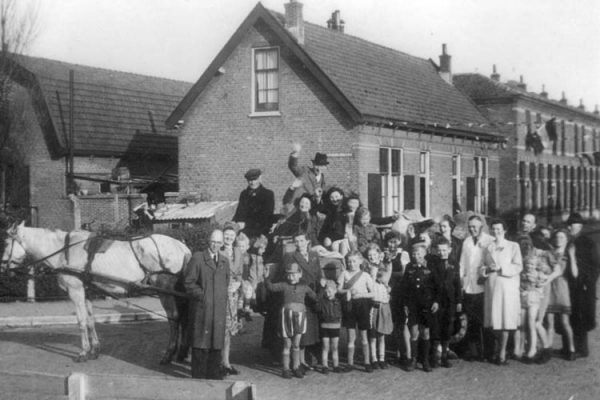Hendrikus and Martha Snapper

“On Dec. 10, 2006, Yad Vashem, the World Holocaust Remembrance Center, posthumously recognized Hein and Martha Snapper as Righteous Among the Nations.
Hendrikus and Martha Snapper passed away in 1979 and 1980.”
– Ryan Snapper, parent of Alexa Snapper, student
Hendrikus and Martha Snapper, remembered by their grandson, Ryan Snapper
My grandparents risked their lives to conceal Jews during the German occupation of the Netherlands.
Hendrikus (Hein) and Martha Snapper were both in their early 40s when the war broke out in the Netherlands in May 1940. They lived with their six young children in Naaldwijk, a town in the western part of the Netherlands, halfway between The Hague and Rotterdam. Hein Snapper was in charge of the local labor exchange, while Martha Snapper was at home taking care of the children and the household.
Because of his position within the official local bureaucracy, Hein Snapper was confronted at an early stage with the discriminatory measures against the Jews: the registration of all Jews, the expropriation of their property and the expulsion of Jewish children from public schools. The mainstream looked the other way.
In the summer of 1942, a new and unprecedented stage in the persecution of the Jews began — the deportation to “the East” — allegedly to forced labor. Hein Snapper decided to act, and so the the bystander became a rescuer. With the full support of his wife Martha, Snapper became active in a local underground group. Soon the Snappers were put in touch with a Jewish family. The de Hartogs from Rotterdam had received their summons to go to “the East” and were desperately trying to find a place to hide.
Hiding places were hard to come by since sheltering Jews meant putting one’s own life and that of one’s family in danger of arrest and even death. Yet, defying all dangers and with six small children, the Snappers decided to open their doors.
The Snappers took in Rosa de Hartog, the mother, who from then on became known as “Juf.” She was presented as the live-in housekeeper for the large Snapper family of eight. They arranged for neighbors to take in Rosa’s husband Levy (Leen), and their daughter Truus. Further hiding places were located for the other de Hartog children, Annie, Esther, Jacques and Salomon.
Despite the danger involved, both Leen and Truus de Hartog would sneak to the Snapper home to spend a few hours together with Rosa. Truus, and later Annie, would often stay for dinner at the Snapper’s.
May 1943 saw the beginning of a massive recruitment of Dutch men between the ages of 18 and 45 for forced labor in Germany. Hein Snapper immediately destroyed personal data in the municipal registry, creating new forged documents. If discovered, this would have meant confinement to a concentration camp or death.
Sheltering a Jew meant embarking on a clandestine life — the fear of discovery as a constant companion for an unknown length of time. The Snappers’ resolve didn’t waver even in 1944, when a number of German soldiers were billeted in the Snapper home. The Snappers did not panic and allowed Rosa de Hartog to stay. The daily stress for Hein and Martha Snapper was unimaginable.
Having to feed nine people during the last winter of the war, 1944-1945, known as the “Hongerwinter” or Hunger Winter, became especially difficult. Much of the country’s food supply, electricity and gas were cut off. Many people survived on flower bulbs, but more starved to death. Still Rosa de Hartog was allowed to remain with the Snappers. Martha Snapper even managed to convince the German soldiers, who had their own food stashed in a locked room, to set some aside for her children.
Fortunately, the real identity of “Juf” was never detected and the de Hartogs all survived the war in their respective hiding places until the liberation in May 1945. After the war Hein Snapper received special recognition from Prince Bernhard for his resistance activities. In 1946, before the establishment of the State of Israel, the de Hartogs planted trees for the Snappers as a token of their gratitude.